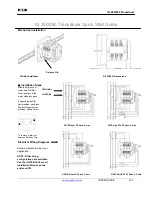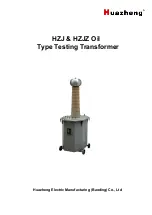
CC2500
SWRS040C
Page 42 of 89
Event 1 follows Event 0 after a programmed
timeout.
The time between two consecutive Event 0 is
programmed with a mantissa value given by
and
,
and
an
exponent
value
set
by
. The equation is:
RES
WOR
XOSC
Event
EVENT
f
t
_
5
0
2
0
750
The Event 1 timeout is programmed with
.
shows
the
timing relationship between Event 0 timeout
and Event 1 timeout.
Figure 18: Event 0 and Event 1 Relationship
The time from the
CC2500
enters SLEEP state
until the next Event 0 is programmed to
appear (t
SLEEP
in Figure 18) should be larger
than 11.08 ms when using a 26 MHz crystal
and 10.67 ms when a 27 MHz crystal is used.
If t
SLEEP
is less than 11.08 (10.67) ms there is a
chance that the consecutive Event 0 will occur
128
750
XOSC
f
seconds
too early. Application Note AN047 [3] explains
in detail the theory of operation and the
different registers involved when using WOR,
as well as highlighting important aspects when
using WOR mode.
19.5.1 RC Oscillator and Timing
The frequency of the low-power RC oscillator
used for the WOR functionality varies with
temperature and supply voltage. In order to
keep the frequency as accurate as possible,
the RC oscillator will be calibrated whenever
possible, which is when the XOSC is running
and the chip is not in the SLEEP state. When
the power and XOSC is enabled, the clock
used by the WOR timer is a divided XOSC
clock. When the chip goes to the SLEEP state,
the RC oscillator will use the last valid
calibration result. The frequency of the RC
oscillator
is
locked
to
the
main
crystal
frequency divided by 750.
In applications where the radio wakes up very
often, typically several times every second, it
is possible to do the RC oscillator calibration
once
and
then
turn
off
calibration
WORCTRL.RC_CAL
=0) to reduce the current
consumption. This requires that RC oscillator
calibration values are read from registers
RCCTRL0_STATUS
and
RCCTRL1_STATUS
and written back to
RCCTRL0
and
respectively. If the RC oscillator calibration is
turned off it will have to be manually turned on
again
if
temperature
and
supply voltage
changes.
Refer to Application Note AN047 [3] for further
details.
19.6
Timing
The radio controller controls most timing in
CC2500
, such as synthesizer calibration, PLL
lock time and RX/TX turnaround times. Timing
from IDLE to RX and IDLE to TX is constant,
dependent on the auto calibration setting.
RX/TX and TX/RX turnaround times are
constant. The calibration time is constant
18739 clock periods. Table 28 shows timing in
crystal clock cycles for key state transitions.
Power on time and XOSC start-up times are
variable, but within the limits stated in Table 7.
Note that in a frequency hopping spread
spectrum or a multi-channel protocol the
calibration time can be reduced from 721 µs to
approximately 150 µs. This is explained in
Section 31.2.
Description
XOSC
Periods
26 MHz
Crystal
IDLE to RX, no calibration
2298
88.4
μ
s
IDLE to RX, with calibration
~21037
809
μ
s
IDLE to TX/FSTXON, no calibration
2298
88.4
μ
s
IDLE to TX/FSTXON, with calibration
~21037
809
μ
s
TX to RX switch
560
21.5
μ
s
RX to TX switch
250
9.6
μ
s
RX or TX to IDLE, no calibration
2
0.1
μ
s
RX or TX to IDLE, with calibration
~18739
721
μ
s
Manual calibration
~18739
721
μ
s
Table 28: State Transition Timing
Содержание CC2500
Страница 91: ...PACKAGE OPTION ADDENDUM www ti com 6 Feb 2020 Addendum Page 2 ...
Страница 94: ......
Страница 95: ......
















































